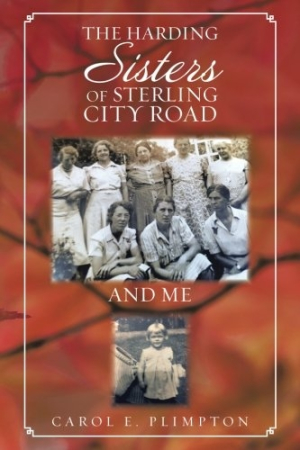The Harding Sisters of Sterling City Road and Me
An intriguing glimpse into a bygone era, The Harding Sisters of Sterling City Road and Me commemorates the unique bond of sisterhood within a spirited family.
Home to two boatyards, a general store, a volunteer fire department, and a church, the quaint riverside town of Lyme, Connecticut, is also where Lyman and Nora Harding raised all ten of their daughters. In The Harding Sisters of Sterling City Road and Me, their direct descendant Carol E. Plimpton opens the family records, sharing the sweetness, humor, and scandals of small-town life in post-WWII America.
Growing up in the era of Ed Sullivan, telephone party lines, swimming holes, and 4-H projects, Carol was also regaled with tales of her grandmother and great-aunts. From these shared memories, Carol’s own experiences, local records, personal scrapbooks, obituaries, and a short-lived gossip column, each woman’s personality takes shape in the greater framework of the Harding family and their beloved hometown.
A concise and conscientious narrator, Carol focuses on the sisters—Florence, Helen, Kate, Maria, Mae, Elsie, Tess, Ruth, Hazel, and Grace—her relationship to each of them, and to a lesser extent, their relationships with each other. Due to a strong feeling that the sisters “deserve that the truth be told,” facts are strictly adhered to, albeit most often from Carol’s point of view, and with any known gossip repeated as such.
Entertaining anecdotes, jokes, and sibling squabbles appear alongside genealogical listings of the original twelve Harding children—ten daughters and two ill-fated sons—and subsequent generations, breaking up the drier documentation with more personal accounts. The resulting slim memoir is a combination of storytelling and record keeping with both human interest and historical appeal.
Organized first by sister, then by topics such as “Church,” “Christmas,” and “The Hamburg Fair,” the chronology meanders from eldest sister Florence’s birth in 1883 to the final chapter, aptly named “Order of Death.” Backtracking and repetition muddles the timeline somewhat; for example, each sister’s obituary is included twice, once early on in her individual chapter, then again later, making it difficult to determine who is alive at any given time. Death, and in particular funeral arrangements for the original Harding sisters and their husbands, is a recurring theme, with an entire chapter devoted to cemetery placement. The repetition is, however, useful for keeping names and alliances straight.
Black-and-white portraits and photographs of the Hardings as well as several of young Carol are interspersed throughout, along with transcripts of letters and articles, all adding to the nostalgic tone. Whimsical and innocent observations, like those of local couture—“The bride wore a light blue suit with white blouse and gloves and black hat and shoes”—are offset by an unsolved murder investigation, hints of misconduct, and controversy surrounding a sister or two.
An intriguing glimpse into a bygone era, The Harding Sisters of Sterling City Road and Me commemorates the unique bond of sisterhood within a spirited family.
Reviewed by
Pallas Gates McCorquodale
Disclosure: This article is not an endorsement, but a review. The publisher of this book provided free copies of the book and paid a small fee to have their book reviewed by a professional reviewer. Foreword Reviews and Clarion Reviews make no guarantee that the publisher will receive a positive review. Foreword Magazine, Inc. is disclosing this in accordance with the Federal Trade Commission’s 16 CFR, Part 255.

